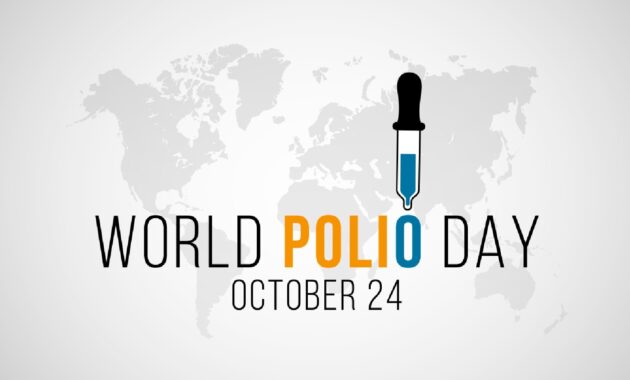As a parent, you must make sure your child gets all the necessary vaccines on time. One of the most important is the polio vaccine to fight against poliomyelitis or polio. It is a highly infectious viral disease that mostly affects kids under the age of five. According to the World Health Organization, the virus gets transmitted by person-to-person spread. It majorly happens through the faecal-oral route or contaminated water or food and then the virus multiplies in the intestine. From there, it can reach the nervous system and lead to paralysis. Though India completes 12 polio-free years in January this year, you should know everything about it to protect your child. On the occasion of World Polio Day, which falls on October 24, let us tell you the signs of polio in kids.
Common signs of polio in children
Polio is a viral disease that attacks the nervous system. Here are some symptoms:
1. Fever
Children can have fever due to many reasons. Sometimes, it is due to weather change or having chilled foods or drinks. But at times, fever can be a sign of a health problem. Children with polio often develop a high fever, which is usually one of the first symptoms, says Dr R.D. Srivastava, Senior Consultant and Head of Department, Pediatric and Neonatology, Sri Balaji Action Medical Institute, New Delhi.

Children should be vaccinated against polio. Image Courtesy: Shutterstock.
2. Fatigue
Children are generally full of life and energy. They run around and like to play games outdoors. But if they experience general weakness and get tired easily, you should be careful.
3. Headache
Headache can be caused by many things, including ice cream or frozen foods. Turns out, polio can also cause headaches, which can be a sign of the virus affecting the nervous system.
4. Stiffness in the neck and back
When we sit for too long in front of a computer, we end up with pain in the neck and back. In children, muscle stiffness or pain, particularly in the neck and back, can be a symptom of polio.
Select Topics of your interest and let us customize your feed.
PERSONALISE NOW
5. Muscle weakness or paralysis
According to Dr Srivastava, the hallmark sign of polio in children is muscle weakness. In severe cases, it can lead to paralysis, usually in the legs.
If your child has polio, they can also experience sore throat, decreased appetite, nausea, vomiting, constipation or abdominal pain as well.

Can polio be cured?
Unfortunately, there is no cure for polio, but it can be managed through supportive care, says Dr Srivastava. This includes rest, pain relief and physical therapy to maintain muscle strength. In some cases, respiratory support may be required for children with severe muscle weakness.
The primary way to prevent polio is through vaccination. The oral polio vaccine and the inactivated polio vaccine are the ones that are used to immunise children against the virus. While the inactivated polio vaccine is done by injection, the oral polio vaccine is administered by mouth. Also, practicing good hygiene such as regular handwashing and prevention of open defecation can help to avoid the spread of the virus.
Global efforts to eradicate polio through vaccination campaigns have been successful in reducing the number of cases worldwide. According to WHO, polio cases have gone down by more than 99 percent since 1988. The figures dropped from an estimated 350,000 cases in more than 125 countries to just six reported cases two years ago. So, make sure your little one gets the polio vaccine before they celebrate their fifth birthday.
#World #Polio #Day #symptoms #polio #children
